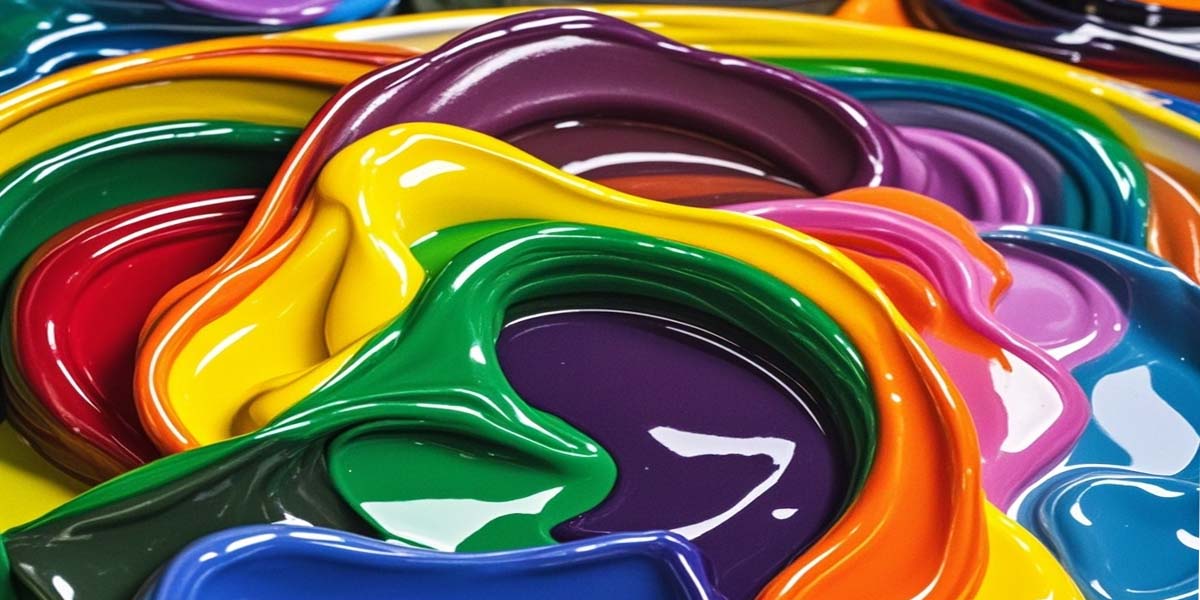Environmental Standards for Screen and Pad Printing Inks: A Guide
Screen and pad printing inks play a crucial role in diverse industries, especially in product decoration, labeling, and functional applications. As environmental consciousness grows, stringent regulations and standards have been introduced to ensure these inks are environmentally friendly and safe for human health. This guide explores the key environmental standards and requirements, including REACH, RoHS, ISO 2846, EN 71-3, halogen-free specifications, VOC limits, phthalates, and PAHs, offering valuable insights for businesses and professionals aiming for regulatory compliance.
1. REACH
2. RoHS
3. ISO 2846
4. EN 71-3
5. Halogen-Free Requirements
6. VOC Content Limits
7. Phthalates Requirements
8. Polycyclic Aromatic Hydrocarbons (PAHs) Requirements
9. Conclusion

1. REACH (Registration, Evaluation, Authorisation and Restriction of Chemicals)
The REACH regulation, established by the European Union, is a comprehensive regulation aimed at improving the management of chemicals with respect to environmental and human health. REACH imposes stringent requirements on all chemicals entering the EU market, including those used in screen printing and pad printing inks.
Specific Requirements:
- Registration: Any chemical substance produced or imported into the EU in quantities exceeding 1 ton per year must be registered with the European Chemicals Agency (ECHA). Ink manufacturers must provide detailed information about the substance, including its physical and chemical properties, hazards, uses, and safety assessments. This process ensures that all potentially hazardous substances are thoroughly evaluated before use, with transparency in data.
- Evaluation: Depending on the hazard and exposure levels, ECHA may require further risk assessment. Substances of Very High Concern (SVHC) must undergo additional testing and evaluation to ensure that they do not pose unacceptable risks to the environment and human health under normal usage conditions.
- Authorisation: Some particularly hazardous chemicals, such as carcinogens and persistent organic pollutants, require authorisation before they can be marketed. This means that if screen or pad printing inks contain these substances, manufacturers must apply for authorisation and demonstrate that there are no safer alternatives or that appropriate risk management measures are in place to control risks.
- Restriction: REACH also includes a series of restriction clauses that prohibit or limit the use of certain chemicals. For example, heavy metals like lead and cadmium and certain carcinogenic substances are strictly limited in inks. These restrictions aim to prevent the release of harmful substances, protecting both the environment and human health.
2. RoHS
The RoHS Directive (Restriction of Hazardous Substances in Electrical and Electronic Equipment) aims to limit the use of certain hazardous substances in electronic and electrical equipment. Since screen and pad printing techniques are often used to label and decorate these components, RoHS directly impacts the production and use of these inks.
Specific Requirements:
-
Substance Limits: The RoHS Directive restricts the following substances in electronic and electrical equipment:
-
Substance Maximum Limit Lead (Pb) Must not exceed 0.1% (1000 ppm) Mercury (Hg) Must not exceed 0.1% (1000 ppm) Cadmium (Cd) Must not exceed 0.01% (100 ppm) Hexavalent Chromium (Cr(VI)) Must not exceed 0.1% (1000 ppm) Polybrominated Biphenyls (PBB) Must not exceed 0.1% (1000 ppm) Polybrominated Diphenyl Ethers (PBDE) Must not exceed 0.1% (1000 ppm) Phthalates (DEHP, BBP, DBP, DIBP) Each must not exceed 0.1% (1000 ppm)
-
These substances are restricted in inks because they may release toxic and hazardous substances during high-temperature processing or disposal of the final product, posing serious threats to the environment and human health.
- Compliance Testing: Manufacturers need to conduct rigorous testing to ensure their inks comply with RoHS limits. This is typically done using X-ray fluorescence (XRF) analysis and other laboratory tests. Through compliance testing, it is ensured that all products using these inks remain within the RoHS-mandated hazardous substance limits throughout their lifecycle.
3. ISO 2846
The ISO 2846 series standards focus on color consistency in inks, applicable to different printing techniques. Although these standards primarily emphasize color performance consistency, they also indirectly relate to the chemical composition and environmental performance of the inks.
Specific Requirements:
- Color Consistency: ISO 2846 requires that inks produce a consistent color output under specified conditions. This is crucial for ensuring the color stability of different ink batches during printing. To meet this requirement, the chemical composition of the ink must be highly consistent and free from harmful substances that could cause color instability or variation.
- Environmental and Safety Considerations: While ISO 2846 mainly concerns color standards, ink manufacturers must also ensure their products comply with other relevant environmental regulations, such as REACH and RoHS. This means the ink’s composition must not only remain color-stable but also free from restricted or prohibited hazardous substances, and must not release harmful volatile organic compounds (VOC) during use.
4. EN 71-3 Toy Safety Standard
EN 71-3 is a European standard concerning the migration limits of certain elements in toy materials, ensuring that materials used in children's toys are harmless. Since screen and pad printing inks are often used for toy decoration and marking, compliance with this standard is crucial for ink manufacturers.
Specific Requirements:
- Migration Limits: EN 71-3 specifies maximum migration limits for harmful elements such as lead, cadmium, mercury, arsenic, chromium, barium, and selenium. When inks are applied to toys that may come into contact with children, the migration levels of these elements must not exceed the specified limits. These limits are set based on the potential for children to come into contact with these inks through mouthing or skin contact.
- Testing Methods: To assess whether harmful elements in the ink will be released during use, manufacturers must conduct migration tests under simulated contact conditions. These tests involve exposing the ink to specific temperatures and humidity levels to observe whether the harmful elements exceed the limits. The test results must demonstrate that the ink does not release harmful elements beyond the standard limits during use.
5. Halogen-Free Requirements
Halogen-free materials are mainly used to meet the environmental demands of the electronics industry, particularly in terms of fire safety and the release of toxic gases. Halogen-free inks require that the materials do not contain halogen compounds such as fluorine, chlorine, and bromine, as these compounds can produce toxic gases when burned, polluting the environment and harming health.
Specific Requirements:
-
Limit Values: Typically, halogen-free inks should meet the following requirements:
- The total content of chlorine (Cl) and bromine (Br) should be less than 900 ppm.
- The total halogen content should be less than 1500 ppm.
These limits are designed to ensure that electronic devices using these inks do not release toxic gases during extreme conditions such as fires.
-
Compliance Testing: Manufacturers need to conduct rigorous testing and certification to prove that their ink products meet halogen-free requirements. Testing methods typically include ion chromatography (IC) or X-ray fluorescence (XRF) testing to accurately measure the halogen content in the ink. These tests ensure that the ink will not pose additional pollution risks to the environment when used or disposed of.
6. VOC Content Limits
Volatile Organic Compounds (VOCs) are a significant component of inks, and they can volatilize into the air during use, contributing to air pollution and health hazards. Therefore, limiting VOC content is crucial for ensuring the environmental friendliness of inks.
Specific Requirements:
-
Limit Standards: Different countries and regions have different VOC content limits. For example:
- EU: According to EU standards, the VOC content in inks typically needs to be below 5%-10%.
- USA: According to the California Air Resources Board (CARB) regulations, the VOC content in screen and pad printing inks must be below 0.8 lbs/gallon (100 grams/liter).
- China: According to GB 38507-2020, the VOC content in screen and pad printing inks must be below 300 grams/liter.
These limits aim to reduce atmospheric pollution from ink use and lower the potential health risks to humans.
-
Compliance Testing: Manufacturers need to test the VOC content in their inks using methods like gas chromatography (GC) or Fourier-transform infrared spectroscopy (FTIR) to ensure compliance with the relevant regulations. Compliance testing ensures that the product will not release excessive amounts of VOCs during use, thereby reducing air pollution and the potential health risks to users.
7. Phthalates Requirements
Phthalates are a class of chemicals commonly used as plasticizers in various products. However, some phthalates are endocrine disruptors and pose potential health risks. Therefore, their use in screen and pad printing inks is strictly regulated.
Specific Requirements:
-
Limit Values: RoHS 3 and REACH regulations restrict the use of phthalates, particularly DEHP, BBP, DBP, and DIBP, with a total content not exceeding 0.1% (1000 ppm). These restrictions aim to prevent phthalates from causing environmental and health risks during production, use, and disposal.
-
Compliance Testing: Ink manufacturers need to test their products using high-performance liquid chromatography (HPLC) or gas chromatography-mass spectrometry (GC-MS) to ensure that phthalate content complies with the standard requirements. These tests can effectively detect and control the phthalate content in the inks, ensuring their safety and environmental friendliness during use.
8. Polycyclic Aromatic Hydrocarbons (PAHs) Requirements
Polycyclic aromatic hydrocarbons (PAHs) are common environmental pollutants known for their carcinogenic and mutagenic properties. In screen and pad printing inks, these substances may originate from certain non-compliant dyes or additives, so their content needs to be strictly controlled.
Specific Requirements:
-
Limit Standards: According to the EU REACH regulation and German GS certification, the PAH content in inks should be controlled at extremely low levels:
- PAH content in toys and children’s products should not exceed 0.5 mg/kg.
- PAH content in other consumer goods should be below 1.0 mg/kg.
These limits are set to prevent PAHs from causing potential health risks to children and adults during prolonged exposure.
-
Compliance Testing: PAHs are usually detected using gas chromatography-mass spectrometry (GC-MS). Manufacturers need to provide relevant test reports to prove that their products comply. This test can effectively identify the PAH content in the ink, ensuring it meets international standards and regulations.
9. Conclusion
In conclusion, the environmental friendliness of screen and pad printing inks must comply with numerous international and national standards. These standards cover restrictions on hazardous substances, VOC content limits, and safety requirements for specific uses (such as children’s toys). Manufacturers producing these inks must adhere strictly to these environmental standards and conduct various tests and certifications to ensure their products comply.
By implementing these environmental measures, manufacturers can not only reduce their environmental impact but also enhance their market competitiveness. In an era of increasing environmental awareness, screen and pad printing inks that meet environmental standards will become a necessary trend for industry development.
Manufacturers and businesses must stay informed about changes in international regulations and proactively adopt more environmentally friendly materials and production processes to meet increasingly stringent environmental requirements. Through compliance efforts and innovation, screen and pad printing inks will find a balance between environmental protection and performance, driving the industry's sustainable development.

